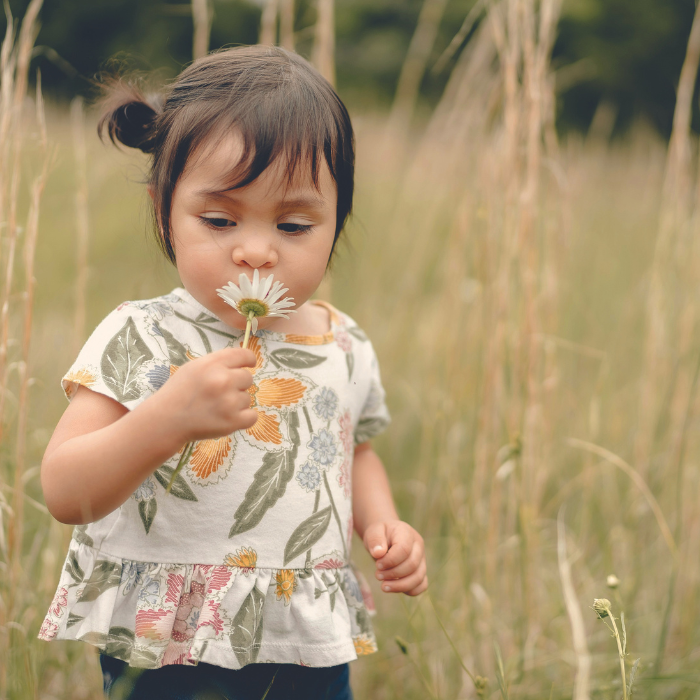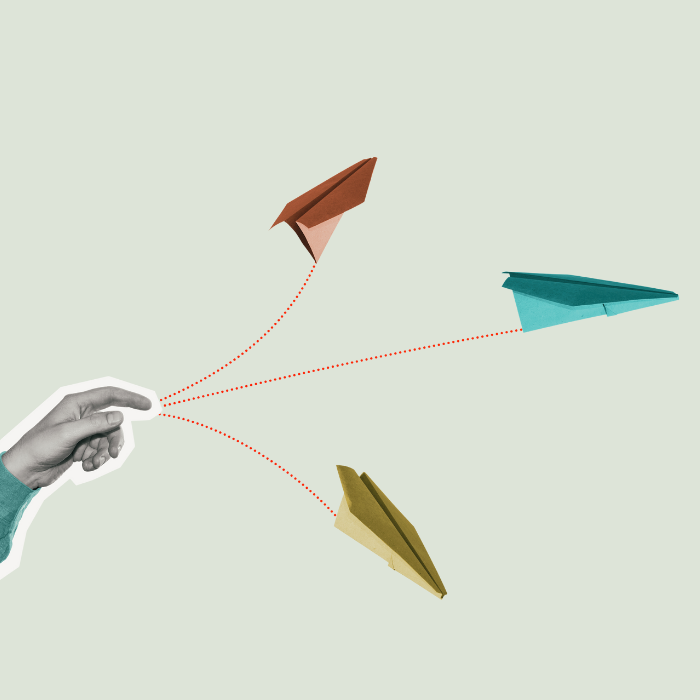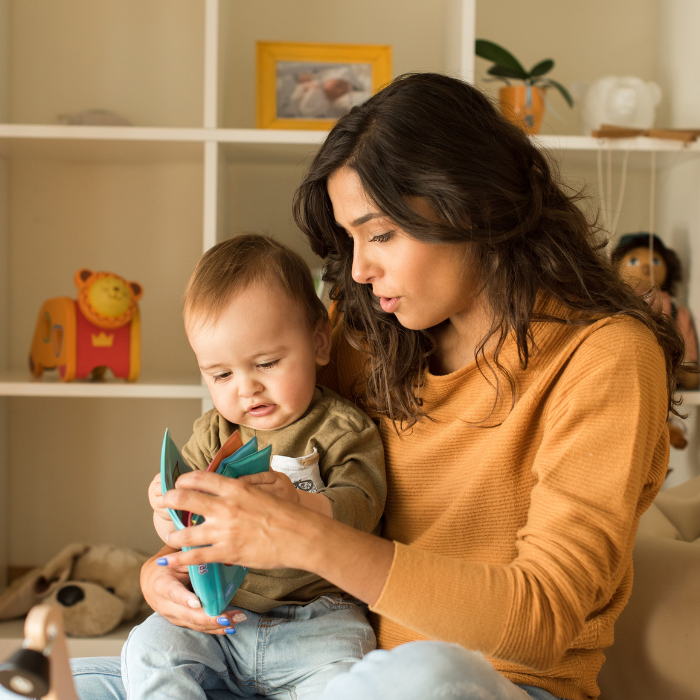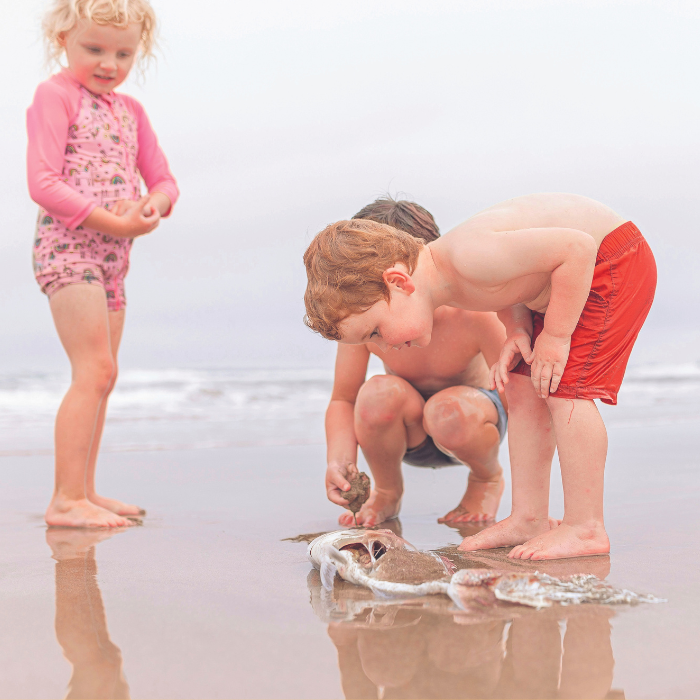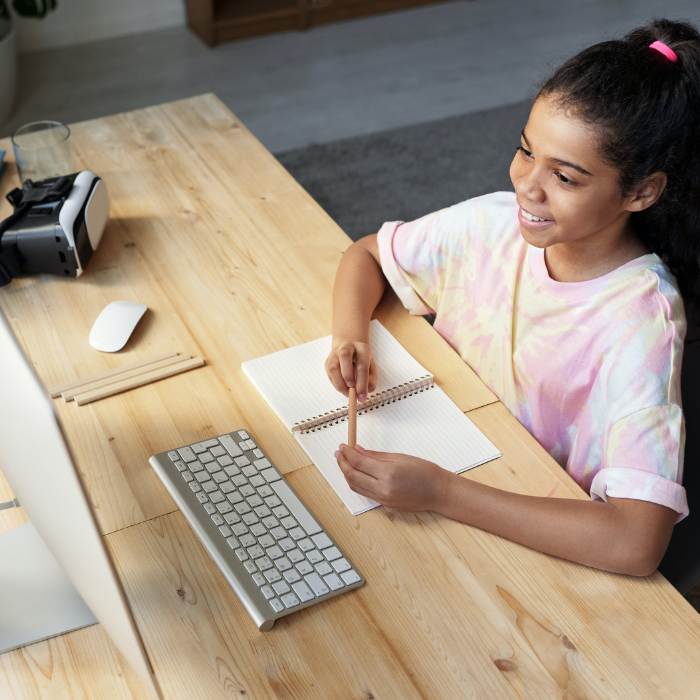One of the great things about science at home is that we can wonder about things with children and not necessarily know the answers. It’s the questioning and being curious about the world that counts.

Science is so vital to our society: from medicine to caring for the environment, to what we eat and wear. Science is everywhere and young children are fascinated by scientific discovery. Lately however, that fascination has been under threat. Researchers are concerned that young people’s interest in science has declined and that what’s being taught in school doesn’t seem to be cutting it in the modern world. So while the experts stress over what needs to change, we can start at home, helping our kids get excited again about science and involved in discovery.
Our beautiful natural world
All it took was a large magnifying glass and a group of preschoolers on a short bush walk. Suddenly little scientists were popping up everywhere. “Look, there’s a bug on that leaf!”, “What tree is that branch from?”, “Hey, they float!”
I just followed along, marvelling at their discoveries and occasionally pointing out a bug floating on the water, or an interesting hole to peer into. We overturned a few logs, and felt the bark on a tree. We even discussed a cow pat! One of the great things about science at home is that we can wonder about things with children and not necessarily know the answers. It’s the questioning and being curious about the world that counts.
Science out and about: Find a nature walk, or just your backyard, and take photos of your discoveries. Collect up leaves, pine cones, or bugs if you’re brave, to look at and sort back at home. Talk about similarities, differences, and patterns, or think up something you could use them for. Pine cones make great bird feeders when covered with fat and seeds. Collages of collected items are also great on paper, or in a sandpit or patch of dirt. Bugs can be great pets – we have enjoyed two lots of ladybirds in our house.
What’s in our kitchen?
Kitchens are science treasure boxes. When my husband bakes with our 4-year-old daughter, they watch the yeast rise, make chemical reactions with baking soda, alter substances by cooking and mixing them, and turn solid chocolate into liquid with heat (yum) … yes, baking is science! And then there’s my favourite kitchen experiment (because I can’t cook): cornflour and water. The right combination and you get a fantastically gloopy slime that is hard and runny at the same time. Add some food colouring and taadaa! Hours of slippery, sticky science.
My daughter’s favourite experiment needs a bowl of water and whatever fruit she can grab. She loves to see which ones sink or float. Simple, fun and you get to eat the experiments too. What could be better? Eggs are interesting also. A fresh egg will sink and an ‘off’ one will float. It’s a great chance for kids to come up with their own scientific theories. Remember, the correct answers are less important than encouraging curiosity and critical thinking. Questions such as, “What if?” and “How come?” are helpful.
Food science: Try making your own pizza bases and discover together what the yeast does to the mixture. Get everyone to put on their favourite toppings. When the cheese melts, point out (excitedly) how the solid is turning into a liquid. Ask for their ideas, and wonder with them what else might turn to a liquid if heated. You could even follow it up by melting chocolate to dip fruit in for dessert.
Fun with physics
After years of brain-numbing high school physics I never imagined I would be saying this, but physics can be the most exciting area of science. Recently my husband, an early childhood teacher, made rockets with his kids using a fizzy drink bottle and a bike pump. They then propelled small balloon rockets along strings and made their own little planes out of wood. Activities like these take a bit of preparation, but even simple toys can be used to discover scientific concepts like propulsion. When our eldest girl was 11-years-old, we came across some little parachute men from the $2 shop. Standing on the couch just wasn’t a satisfying enough height to drop them from. So, using the local park and objects found around home, we spent hours inventing various slings and catapults to shoot the little men as high as possible and still get their parachutes to open. What started as a simple two minute activity became a hilarious, quite competitive, science activity.
Science in motion: On a hot day try this pressure experiment using balloons filled with water. Pre-fill the balloons to about the size of a grapefruit. As you hand them to your child, use a toothpick to poke a hole near the tie (where the balloon is thickest). They can squeeze the balloon to draw pictures on the concrete or walls. Or just run around and squirt each other!
Wondering and being truly curious, puzzling and thinking is invaluable in science. When parents and children are discovering together and showing fascination about a shared discovery, children stay interested for longer and see that science is valued. Instead of jumping in with lots of answers, parents can encourage children to look for patterns and develop their own theories about the world first. Remember: science changes with new technology and new ideas – children’s different ideas are okay!
One of the great things about science at home is that we can wonder about things with children and not necessarily know the answers. It’s the questioning and being curious about the world that counts.
ages and stages
Under-5s
- This age-group will be exploring their world and developing their own interests. Use what they are interested in to expand on their scientific curiosity and questioning. They need lots of exposure to different experiences.
- Let them explore their own ideas around questions such as, “How?”, “What if?”, “Why?” and “What (can we do/will it do, etc)?”
5- to 8-years
- They will be adding to their discoveries by seeking out answers. Find books, documentaries and real life examples for them to extend their knowledge and see patterns.
- Young children can draw or make models to represent their ideas and discoveries. www.sciencekids.org.nz has some games and ideas to get started.
9- to 12-years
- They will be able to explore solutions to real life problems, or even future potential problems, and see others doing the same.
- Opportunities to see science working in real-life, and websites, are helpful. Try www.sciencelearning.org.nz
Kelly Eden-Calcott, prior to being a mum of three lovely girls, was a primary school teacher. She developed a love for science (especially biology) when her dad brought a full-sized skeleton home from work!



